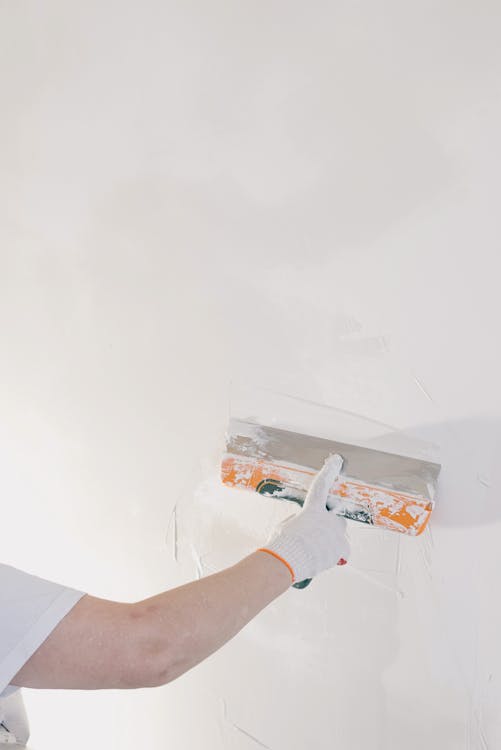For ages, plaster has been a go-to building material due to its adaptability, longevity, and good looks. Plaster has been an integral part of building construction from prehistoric times to the present day. Plaster has a long history of usage in the building trade, and this article will go into that history as well as the several reasons why builders and designers still choose it.

Why Is Plaster Used In Construction?
Plaster is used in construction for several reasons, including its versatility, durability, aesthetic appeal, and practical properties, click here:
- Surface Finish: Plaster provides a smooth and even surface finish when applied to walls and ceilings. It can cover up imperfections in underlying materials such as brick, concrete, or drywall, resulting in a uniform appearance.
- Strength and Durability: Plaster, when properly applied, forms a strong and durable surface that can withstand everyday wear and tear. It helps protect the underlying structure from damage and provides added stability.
- Fire Resistance: Plaster is inherently fire-resistant, making it an excellent choice for building interiors. It helps to contain fires and slow down their spread, improving overall safety in residential and commercial spaces.
- Sound Insulation: Plaster has sound-absorbing properties that can help reduce noise transmission between rooms. This is particularly beneficial in multi-unit buildings, where privacy and noise control are important considerations.
- Thermal Insulation: Plaster can provide some degree of thermal insulation, helping to regulate indoor temperatures and reduce energy consumption for heating and cooling.
- Moisture Control: Plaster can help regulate moisture levels within a building by absorbing excess humidity and releasing it slowly over time. This can help prevent issues such as mould and mildew growth.
- Decorative Options: Plaster offers many decorative possibilities, including textured finishes, ornamental details, and intricate mouldings. It can be easily shaped and moulded to create custom designs that enhance the aesthetic appeal of interior spaces.
- Historical Significance: Plaster has a long history in architecture and construction, dating back to ancient civilizations such as the Egyptians, Greeks, and Romans. Its use in traditional building techniques adds a sense of heritage and authenticity to historic structures and restoration projects.
Plaster remains a popular choice in construction due to its versatility, durability, and ability to enhance both the structural and aesthetic aspects of a building.
What Is Plastering?
Plastering is the process of applying a plaster mixture to walls, ceilings, or other surfaces to create a smooth, even, and durable finish. It is a crucial step in construction and renovation projects, as plastering helps to prepare surfaces for painting, wallpapering, or other decorative treatments while also providing structural support and protection.
The plaster mixture typically consists of a combination of gypsum, lime, sand, and water, although various additives may be included to enhance specific properties such as strength, flexibility, or fire resistance.
Plastering can be done manually using hand tools such as trowels and floats or with the assistance of mechanical tools such as plastering machines for larger projects.
The plastering process involves several steps:
- Surface Preparation: Before applying plaster, the surface must be cleaned, repaired, and properly prepared. This may involve removing old plaster, filling cracks or holes, and ensuring that the surface is smooth and free of debris.
- Application of Base Coat: A base coat of plaster, also known as the scratch coat or brown coat, is applied to the surface using a trowel. This coat provides a foundation for the subsequent layers of plaster and helps to fill in any irregularities in the surface.
- Application of Skim Coat: Once the base coat has dried, a skim coat of plaster, also known as the finish coat or white coat, is applied to achieve a smooth and uniform finish. This coat is carefully troweled and levelled to create the desired surface texture.
- Finishing and Polishing: After the plaster has dried, it may be polished or sanded to further smooth out any imperfections and achieve the desired level of smoothness and sheen. Additional decorative treatments such as texture or paint may also be applied as needed.
Plastering requires skill and precision to achieve professional results, and experienced plasterers have the expertise to handle various types of plaster, surfaces, and techniques.
Whether for new construction, renovations, repairs, or decorative finishes, plastering plays a vital role in enhancing the appearance, durability, and functionality of buildings and interior spaces.
When Should I Hire Plastering Service?
You should consider hiring a plastering service for various reasons and situations, including:
- New Construction: When building a new home or commercial property, hiring a plastering service is essential for applying plaster to walls and ceilings. Professional plasterers ensure proper application and finishing, resulting in a smooth and durable surface.
- Renovations and Remodeling: If you’re renovating or remodelling your property, especially older buildings with existing plaster surfaces, hiring a plastering service can help repair damaged or deteriorated plaster, apply new plaster where needed, and achieve a consistent look throughout the space.
- Cracks and Damage: Cracks, holes, or other damage to plaster surfaces should be addressed promptly to prevent further deterioration and maintain the structural integrity of the building. A plastering service can repair such damage efficiently and effectively.
- Texture or Decorative Finishes: If you desire textured or decorative plaster finishes for your walls or ceilings, hiring a professional plasterer is essential. They have the expertise to create custom textures or ornamental designs according to your preferences.
- Water Damage: Water damage can cause plaster to degrade, soften, or develop mould and mildew. Hiring a plastering service can help assess the extent of the damage, repair affected areas, and prevent future moisture issues.
- Soundproofing or Insulation: Plaster can contribute to soundproofing and thermal insulation when applied correctly. If you’re looking to improve these aspects of your property, consulting a plastering service can help you choose the appropriate materials and techniques.
- Historic Preservation: Hiring a plastering service experienced in historic preservation is crucial for historic buildings or properties with traditional plaster finishes. They can repair, restore, or replicate historic plasterwork while preserving the authenticity and character of the structure.
- Professional Advice: Even if you need clarification on whether plastering is necessary for your project, consulting a plastering service can provide valuable insight and recommendations based on your specific needs and goals.
Hiring a plastering service is advisable whenever you require expert assistance with plaster-related tasks, whether for new construction, renovations, repairs, decorative finishes, or historic preservation. Professional plasterers have the skills, knowledge, and tools to ensure high-quality results and enhance the overall appearance and integrity of your property.
Conclusion
Applying a plaster mixture to surfaces to produce uniform, long-lasting finishes is an essential part of building and remodelling projects. Plastering supports and protects structural elements, creates a perfect surface for creative treatments, and adds visual appeal to walls, ceilings, and other architectural components.
Plasterers excel at improving the look and durability of interior spaces and buildings through meticulous surface preparation, skim coat application, and finishing touches. Skilled craftspeople who apply their knowledge, accuracy, and imagination to every plastering job are indispensable in both new construction and historic preservation.
Plastering, in the end, is a perfect example of how tradition and innovation can coexist; it combines old processes with new materials and techniques to make surfaces that last a lifetime and add value to the built environment.
